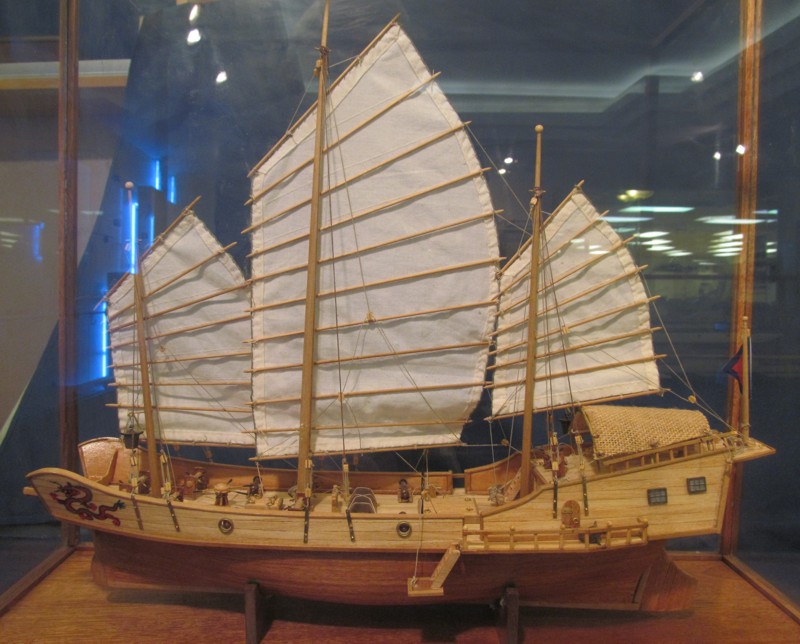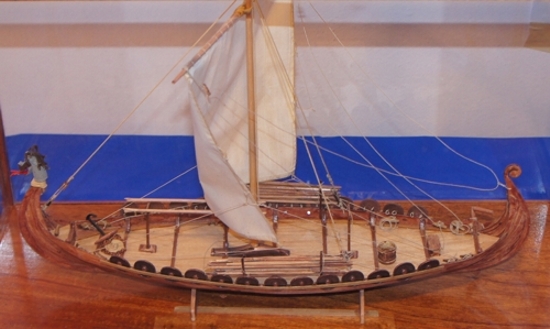
Modeler’s Name: Erik Collette
Period: last 300 years
Scale: 1:60
Type of Model: Modified kit
Build Time: 150 hrs.
Build Materials:
Boxwood, Sapelli, Walnut, Brass fittings
Ship’s Story:
The Red Dragon was a Chinese junk. These ships have sailed the Far East oceans as far as Africa for over 3000 years. They navigated with the help of the sun and over 2500 greater stars. Navigation became a lot easier when they invented the compass in the 11th Century. Originally, junks were built with a flat bottom and without a keel, a stem and stern posts. Only when they began to sail on the open ocean did it become a necessity to incorporate a keel to strengthen the ship. The junks were always built with watertight bulkheads which the Chinese learned from studying the structure of the bamboo plant. Junks are still built today, the same way as they were built centuries ago.
Modeler’s Bio:
Erik has been a member of the Rocky Mountain Shipwrights since he was bitten by the modeling bug after visiting the RMS show in 2003. He completed his first model in 2004. Erik hails from Norway, where he was around boats during most of his youth. He attended the Norwegian Naval Academy and sailed on a merchant ship for a year. He came to the USA in 1962 and earned his BSCE and MBA degrees from the University of Denver. He is currently semi-retired as an engineering consultant.

